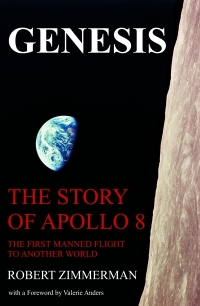Asteroid breaks in two, each piece develops a tail
Astronomers have discovered a main belt asteroid that six years ago broke in two, after which both pieces developed tails resembling comets.
“The results derived from the evolution of the orbit show that the asteroid fragmented approximately six years ago, which makes it the youngest known asteroid pair in the Solar System to date,” says Fernando Moreno, researcher at the Institute of Astrophysics of Andalusia (IAA-CSIC), in charge of the project.
P/2016 J1 presents another important peculiarity, which makes it very unusual. “Both fragments are activated, i.e., they display dust structures similar to comets. This is the first time we observe an asteroid pair with simultaneous activity,” says Fernando Moreno (IAA-CSIC).
Analyses revealed that the asteroids were activated near their perihelion – the point on the orbit nearest to de Sun – between the end of 2015 and the beginning of 2016, and that they remained for a period of between six and nine months. The span of time between the moment of fragmentation and their bout of activity implies that the two events are not related. In fact, the data suggests that the fragmentation also happened near the perihelion but during the previous orbit (it takes P/2016 J1 5.65 years to spin around the Sun). “In all likelihood, the dust emission is due to the sublimation of ice that was left exposed after the fragmentation,” says Moreno (IAA-CSIC).
I suspect that the more we learn about asteroids and comets the more we will blur the line that separates them.
On Christmas Eve 1968 three Americans became the first humans to visit another world. What they did to celebrate was unexpected and profound, and will be remembered throughout all human history. Genesis: the Story of Apollo 8, Robert Zimmerman's classic history of humanity's first journey to another world, tells that story, and it is now available as both an ebook and an audiobook, both with a foreword by Valerie Anders and a new introduction by Robert Zimmerman.
The print edition can be purchased at Amazon or from any other book seller. If you want an autographed copy the price is $60 for the hardback and $45 for the paperback, plus $8 shipping for each. Go here for purchasing details. The ebook is available everywhere for $5.99 (before discount) at amazon, or direct from my ebook publisher, ebookit. If you buy it from ebookit you don't support the big tech companies and the author gets a bigger cut much sooner.
The audiobook is also available at all these vendors, and is also free with a 30-day trial membership to Audible.
"Not simply about one mission, [Genesis] is also the history of America's quest for the moon... Zimmerman has done a masterful job of tying disparate events together into a solid account of one of America's greatest human triumphs."--San Antonio Express-News
Astronomers have discovered a main belt asteroid that six years ago broke in two, after which both pieces developed tails resembling comets.
“The results derived from the evolution of the orbit show that the asteroid fragmented approximately six years ago, which makes it the youngest known asteroid pair in the Solar System to date,” says Fernando Moreno, researcher at the Institute of Astrophysics of Andalusia (IAA-CSIC), in charge of the project.
P/2016 J1 presents another important peculiarity, which makes it very unusual. “Both fragments are activated, i.e., they display dust structures similar to comets. This is the first time we observe an asteroid pair with simultaneous activity,” says Fernando Moreno (IAA-CSIC).
Analyses revealed that the asteroids were activated near their perihelion – the point on the orbit nearest to de Sun – between the end of 2015 and the beginning of 2016, and that they remained for a period of between six and nine months. The span of time between the moment of fragmentation and their bout of activity implies that the two events are not related. In fact, the data suggests that the fragmentation also happened near the perihelion but during the previous orbit (it takes P/2016 J1 5.65 years to spin around the Sun). “In all likelihood, the dust emission is due to the sublimation of ice that was left exposed after the fragmentation,” says Moreno (IAA-CSIC).
I suspect that the more we learn about asteroids and comets the more we will blur the line that separates them.
On Christmas Eve 1968 three Americans became the first humans to visit another world. What they did to celebrate was unexpected and profound, and will be remembered throughout all human history. Genesis: the Story of Apollo 8, Robert Zimmerman's classic history of humanity's first journey to another world, tells that story, and it is now available as both an ebook and an audiobook, both with a foreword by Valerie Anders and a new introduction by Robert Zimmerman.
The print edition can be purchased at Amazon or from any other book seller. If you want an autographed copy the price is $60 for the hardback and $45 for the paperback, plus $8 shipping for each. Go here for purchasing details. The ebook is available everywhere for $5.99 (before discount) at amazon, or direct from my ebook publisher, ebookit. If you buy it from ebookit you don't support the big tech companies and the author gets a bigger cut much sooner.
The audiobook is also available at all these vendors, and is also free with a 30-day trial membership to Audible.
"Not simply about one mission, [Genesis] is also the history of America's quest for the moon... Zimmerman has done a masterful job of tying disparate events together into a solid account of one of America's greatest human triumphs."--San Antonio Express-News


As long as they don’t start calling Pluto a comet I can live with it!